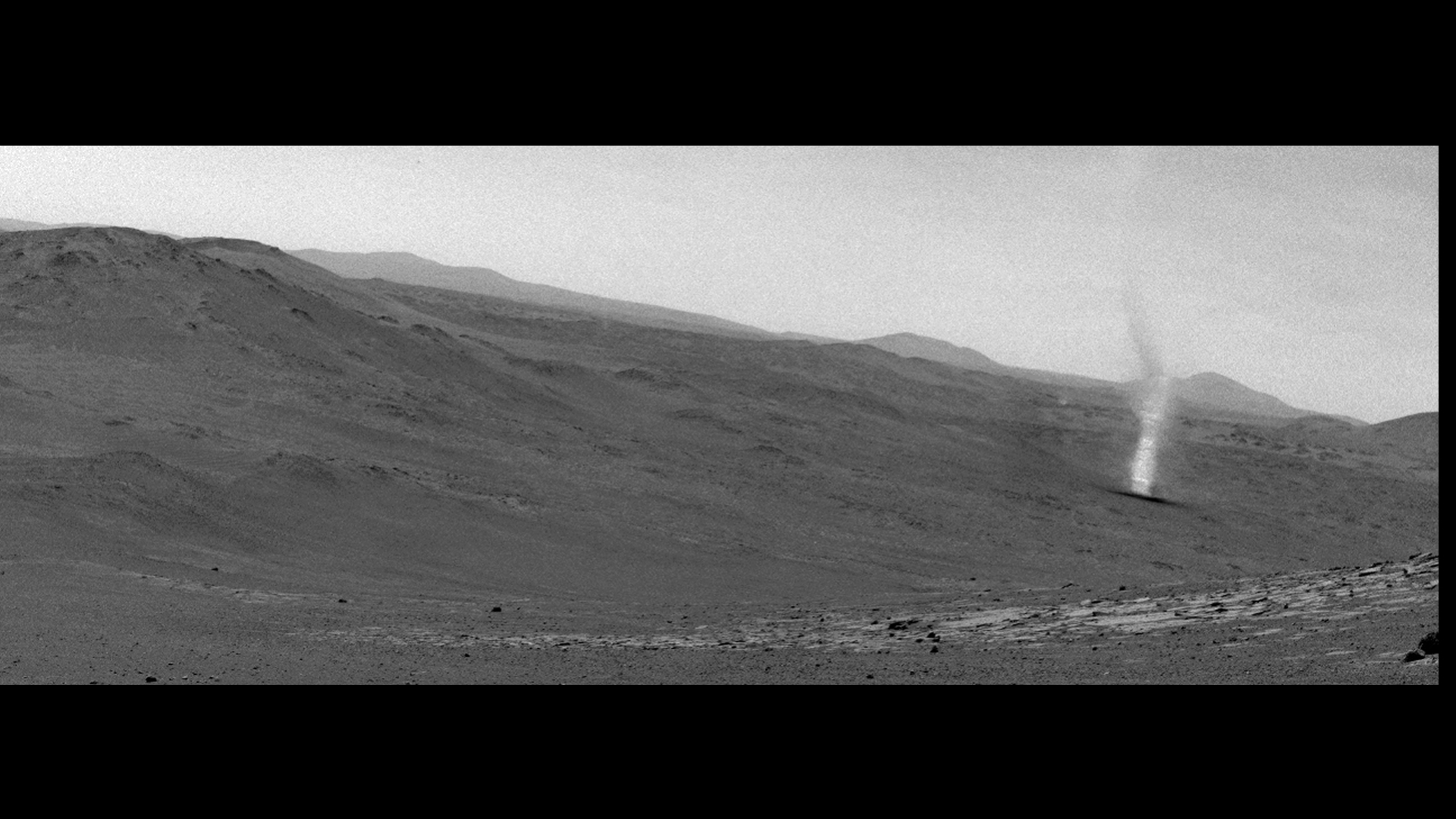Impact of Foam Crack On Shuttle Launch Still Uncertain

This story was updated at4:09 p.m. EDT.
CAPE CANAVERAL, Fla. - NASAmanagers decided Monday to continue preparing for the planned July 4thlaunch of the space shuttle Discovery, even as engineers evaluate a piece of foaminsulation that popped free from the spacecraft's fuel tank.
A team of engineers isporing over a small piece of foam about three inches long which cracked, thenfell, from a bracket connecting a 17-inch feed line that supplies super-coldliquid oxygen to Discovery's engines from its orange external tank.
The foam piece is small,weighing just 0.0057 pounds, less than half of the upper limit - 0.013 pounds -for acceptable debris during a shuttle launch, NASA said.
"It looks like this smallpiece of bread crust," said John Shannon, NASA's deputy shuttle programmanager, during a press briefing here at the Kennedy Space Center (KSC). "Whatwe decided to do was continue with the plan that we were on."
That plan, Shannon said, is to complete the loading ofcryogenic fuel aboard Discovery to power the spacecraft during its plannedSTS-121 spaceflight. Meanwhile, tank engineers will analyze whether Discoverycan fly with the lost foam on July 4, or if the shuttle will requireinspections and repairs at its Pad 39B launch site.
Results from that studywill be presented during a Mission Management Team (MMT) meeting at 6:30 p.m. EDT (2230 GMT), which is led by Shannon, where a final decision will bemade.
Breaking space news, the latest updates on rocket launches, skywatching events and more!
"Getting to it is not anissue, but it would be a schedule hit to us," said NASA launch director MichaelLeinbach. "We cannot accomplish getting access to this area and also supportthe launch tomorrow morning. It's just not possible.
Discoveryis currently scheduled to launch Tuesday at 2:37:51 p.m. EDT (1837:51 GMT) on NASA's STS-121 mission to theInternational Space Station. The planned spaceflight is NASA's second shuttleflight since the 2003 Columbia accident.
Shannon said Discovery's STS-121 crew hasbeen notified of the foam concern. The mission's commander Steven Lindsey askedseveral questions during a short MMT meeting earlier today, with the rest ofthe crew briefed later, he added.
Fallingfoam
Fuel tankfoam loss has been a great concern for NASA since the loss of the space shuttleColumbia, which suffered a heat shield breach by a chunk of the insulation andwas destroyed during reentry - its seven-astronaut crew lost - on Feb. 1, 2003.
Since thenNASA engineers worked to streamline the amount of foam on shuttle fuel tanks,replacing some insulation with heaters after the Columbia accident and removing one large section altogether afterthe 2005 launch of Discovery's STS-114 mission.
The pieceof foam found by inspectors Monday fell from the topmost of a series of bracketsconnecting a liquid oxygen feedline to Discovery's external tank. That topbracket is just above and to the right of the bipod fitting that matesDiscovery to its fuel tank.
"It lookslike it just came off all in one nice piece from the crack," Shannon said.
By NASA'scurrent understanding, Sunday rain showers - which led to that day's launchscrub - led to condensation on a bracket joint that froze into ice from thesuper-cold liquid oxygen inside the nearby feedline.
That icelater pinched into the surrounding foam as Discovery's external tank warmed andexpanded, a normal occurrence as engineers emptied the 526,000 gallon vessel ofits super-chilled liquid oxygen and liquid hydrogen.
JohnChapman, NASA's external tank project manager, said inspectors discovered thecrack during a routine examination conducted after every launch scrub.
The piecefell sometime during that three-hour inspection, and was seen by engineers asthey moved the protective Rotating Service Structure into place aroundDiscovery, he said.
Currentconcerns
NASA officials said thatthe liberated piece of tank foam seen today could not have damaged Discovery'sheat shield during a launch.
"It would not have been anissue," Shannon said. "It is less than half the size that we think can causedamage to the orbiter."
Shuttle managers don'tbelieve the foam loss will impact the ability of Discovery's fuel tank towithstand the heating stresses it will experience during launch. Analysis isstill underway to determine whether any other cracks or damage are afflictingtank bracket.
The potential of ice toform over the area exposed by the foam loss is also a concern, since major foamloss or ice debris could be a hazard for the black, heat-resistant tiles liningDiscovery's belly.
"I do know that we havemore insulation in this area than we absolutely needed," Chapman said, addingthat analysis is underway to evaluate the ice concern. "I expect that thatanalysis will show [we're] good."
NASA's STS-121 MMT meetingwill meet at 6:30 p.m. EDT (2230 GMT) today. The results of that meeting areexpected to be released later this evening.
Shuttle's Foam Crack Could DelayLaunch
Gallery: RareSpace Shuttle Images
ShuttleDiscovery: Complete Coverage
Great SpaceQuizzes: Space Shuttle Countdown
Great SpaceQuizzes: The Space Shuttle
Great Space Quizzes: Life in Orbit

Tariq is the award-winning Editor-in-Chief of Space.com and joined the team in 2001. He covers human spaceflight, as well as skywatching and entertainment. He became Space.com's Editor-in-Chief in 2019. Before joining Space.com, Tariq was a staff reporter for The Los Angeles Times covering education and city beats in La Habra, Fullerton and Huntington Beach. He's a recipient of the 2022 Harry Kolcum Award for excellence in space reporting and the 2025 Space Pioneer Award from the National Space Society. He is an Eagle Scout and Space Camp alum with journalism degrees from the USC and NYU. You can find Tariq at Space.com and as the co-host to the This Week In Space podcast on the TWiT network. To see his latest project, you can follow Tariq on Twitter @tariqjmalik.
